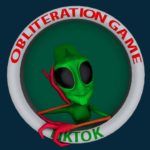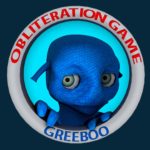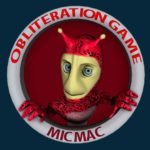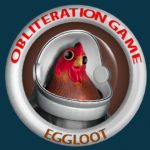Developer: SEMISOFT | Publisher: Another Indie || Overall: 8.5/10
If you’ve never thought a developer, naming itself a dick joke, could make a faithful, competent, and actually fun “JRPG” then I’ve got a surprise for you. And it’s in my pants. Legrand Legacy: Tale of the Fatebounds coins itself as a “love letter” to JRPGs with a “fresh take” on turn-based combat. In practice, it’s like jerking off JRPGs of the early PS1 and early PS2 eras and blowing their collective loads all over your PC’s hard drive.
During high school I became quite a big JRPG player and it has persisted until now. Final Fantasy, Breath of Fire, Xenosaga, Persona, Legend of Dragoon, Chrono Trigger/Cross, Enchanted Arms, Star Ocean, Unlimited SaGa, Lufia, the list goes on. I’ve kept up with my personal interest of JRPGs, exploring the Wild Arms series more recently, but its been a good four years now since I’ve really stuck with one through the end.
Legrand Legacy: Tale of the Fatebounds takes you back to specific time periods of console JRPG gaming. Think of all of the titles that are released just as a new console comes out, with developers trying to get their first JRPGs out quickly; they are less about doing something new and exciting, but more about the basics of the genre and telling a fun story. Legrand Legacy hammers this feeling right on the head, and while it’s admittedly a better-looking game than you might be used to from those time periods, there are so many callbacks baked-in from past titles. So much so, that you just get a nostalgia overload for gaming mechanics being combined in one place and seeing it all just work out becomes a fun exercise in pointing out what came from where. Practically every gaming mechanic can be referred back to another game, and while there are some modern sensibilities, such as a quest log for sidequests, nothing particularly “degrades” from making you feel like you’re playing a JRPG from the era it hearkens back to. And, of course, the characters are also of very attractive design. They really thought of everything! Just don’t hump the mattress too hard, friends.
The biggest accomplishment for Legrand Legacy is that it is actually enjoyable, despite not really solving any of the problems JRPGs from that time period have in today’s gaming environment. Combat is the biggest gameplay aspect; the battles are a bit slow, but you’re not “waiting” as much as you might be used to in this genre. Turns are more phase-oriented, but a turn-order is not completely ignored. The biggest efficiency increase is allowing for all melee attacks to execute at the same time, with spells “channeling” and being cast after melee attacks. Most spells are channeled, while some will cast before melee attacks. Melee attacks are also allowed to interrupt enemy spells, but you’ll have to use the Formation mechanic to prevent that from happening to your characters too. Your “front row” is best served for melee characters, while the “back row” is typically better for casters/ranged. Although enemy spells can still interrupt your back row, you are more reliably able to cast spells there. There is also a slight stat re-balancing from placing a character in a certain row, reflected in having less attack but more defense in the back row, and the opposite in the front row.
You are allowed three active characters during battle, but are able to switch them out like in Final Fantasy X. I’ve always sung the high praises of FFX being the best traditional turn-based system since it opens the ability to use all of your characters during a fight rather than only being able to switch out of battle. It always annoyed me when I’d have so many characters but didn’t have any reason to use them. Though, in Legrand Legacy, when switching characters from the “Reserve” they are able to act in the same turn as well, but may need to move from the front/back row to properly work for your strategy, which does cost a turn.
The major aspect of defeating enemies is the Persona-like elemental weakness/strength attribute system where using particular attacks/spells deal more or less damage. Although not as intuitive/fast-paced as Persona is, Legrand Legacy‘s spell-casting system, known as “Grimoire,” is akin to Chrono Cross with no mana cost and assigning the skills to particular slots. You can use your Grimoire skills as often as you like, with no cooldown or mana cost, and their effectiveness mostly relies on the enemy’s weakness/strengths. Similarly, items are assigned to slots and you’re not able to use your whole item list, forcing you to strategize about the item spread. Grimoire heals are not particularly overpowered, actually healing less than items, so the decision between attacking and healing, and how to heal is a thing. This isn’t typically a dynamic that is present in JRPGs, at least in my experience, since it tends to be an out-of-battle-only mana-management exercise. In Legrand Legacy, however, the only way to heal out of battle is by using items, which are all percentage-based, giving them longevity in their usefulness. Learning of new Grimoire spells is reliant on the way you build your characters with stats as they level; while they basically force you to go in a particular direction, how you get there is up to you. Character builds are intentionally not diverse as a result, but having control over the path allows you to aim for particular spells before others. I have yet to see a dick-themed spell, but anything is possible late-game.
The combat interface is reminiscent of Xenosaga in a sense, while being as functional as a typical Final Fantasy game. Unfortunately, that means you menu hunt a bit more than you feel like you should, and it would have been nice to add “shortcuts” to your favorite spells on the main interface layout rather than having to go two levels to repeat the same skill over and over. Also, for some god-awful reason, they decided to allow for the directional buttons to confirm your choice of spells after highlighting them, which I constantly accidentally hit since the Xbox360 controller’s D-pad is ass. This made me find out there is no way to customize any controller inputs and stop that from happening.
Most actions require the same QTE game to be played for each character, a call-back to Legend of Dragoon and Final Fantasy VIII to a certain extent. There is a circular wheel with a quadrant highlighted; if your dial is timed to land inside of the highlighted quadrant then you are good, but getting it in a small sliver allows for a “Perfect” execution of the skill, allowing for bonus damage or a lesser chance of being interrupted if it is a spell. While it is simple, quick, and not particularly annoying to execute, it does demand that you are actively paying attention during an entire fight. If you don’t play the QTE game or fail it, your characters will all miss. One of the niceties of this genre was being able to plug in all of your commands then walk away for a couple seconds and do something, but in this case it’s not something that happens. Related to your normal attacks, your characters will slowly build up an AP gauge which allows for a special attack that deals devastating damage. The gauge will only fill up based on offensive attacks, so if your healer is just healing all of the time, she won’t gain anything. The numbers that fly around for damage are also a bit confusing because there are a variety of colors that can appear, and since many attacks go off at the same time, you don’t know which numbers belong to who. Considering the weakness system is important to master, this lack of information doesn’t make it easy.
The AP gauge is important to fill up before hitting up a boss, which can be accomplished while you are in the middle of a grind. Yes, unfortunately, you will have to grind for just about an hour in each dungeon before fighting the end boss, and that’s after figuring out the puzzles. There is also a bonus boss in each zone, which is usually about equivalent in difficulty to the story boss, but for the sake of convenience you should defeat it first since you may instantly leave a dungeon in the course of the story. There aren’t any random fights, but it’ll be a challenge running away from the black eyeballs that represent enemy encounters in the dungeon. They respawn very quickly while you’re in the same zone, so it hardly seems relevant that the fights aren’t random. It’s also very hard or impossible to avoid them all, so the point of having generic black shadow eyeball enemies on the map seems a bit redundant. There are also extra sidequests, maybe one or two per town, that will grant you XP after finishing a task, so it can help with bypassing the grind. I’m not particularly against grinding since you really get into the intricacies of the battle system, so the “about an hour per dungeon” seems just enough to get acquainted with the area and master challenges the enemies present before moving on. Plus, the bosses will cut your dick off and you’ll get a game over if you don’t grind, so there’s that.
The inventory system takes on a Star Ocean-type crafting system, but for weapons and items rather than cooking. You’ll collect all sorts of loot from enemies, who never drop actual money, but only items you can sell. This loot can then be used to craft healing items, offensive items, and weapons. Encumbrance is an actual thing in this game, so you won’t be able to run around and grind infinitely — you’ll have to visit a town and store away all of your unused items at a vendor. Unfortunately, the game does not allow you to access your storage for crafting purposes and you have to have it in your actual inventory to use for crafting. You’re still able to walk really slow while encumbered, so instead of picking and choosing, it’ll be less effort to just take everything out, craft your shit, then throw everything back in. The same goes for weapons/gear/dildos — you’ll only be crafting these items and nothing will drop in the field.
While the cutscenes look like shit, the in-game art-style is actually quite faithful to late PS2 visuals, most notably Final Fantasy XII. However, they go for a “pre-rendered background” look like you would have seen in, say, Final Fantasy VIII. Instead of CG, they exclusively use painted backgrounds with some in-game art/elements overlayed on top. The painted backgrounds all look very nice, but depending on the perspective it looks way too obvious that the main character, Finn, isn’t actually “touching” the ground; the shadows the character gives are also a dead giveaway on the dungeon/world maps. The purpose of pre-rendered backgrounds were to supplement the art to make it not look as crappy all of the time, but they seem to have gone too far in that direction and replaced many things you would typically see “in-game” with the paintings. This is so they didn’t have to spend time modeling things like furniture or barrels. There is some exploring of towns, but they are segmented into selectable areas, reminiscent of Unlimited SaGa, though I’m sure there might be a more comprehensive analogy to make here. The areas are physically explored in similar fashion to Final Fantasy VIII, with a static camera. Music and sound effects are also quite faithful to the genre, with the music being a highlight, in terms of variety, as each zone has its own song. You’ll also hear voices of the characters during battle.
The main character of the story, Finn, looks like Ryu from Breath of Fire, with blue hair, a “secret past,” and “loss of memory” to boot. And probably the same 10 inch dick!!!! DAMN!!! However, I was surprised he wasn’t a silent protagonist. Unfortunately, he breaks his character too often to be believed as a memory-less blank slate like they initially pitch him to be, and I wish that they went the silent protagonist route instead. The script dialogue tends to overstay its welcome a lot more often than I’d like — typically I get the point within two or three dialogue boxes, but then they continue the conversation on the same point for another five, or ten dialogue boxes. Perhaps it has something to do with the English translation as the game is being developed in Indonesia? I can’t tell. There are no voice overs either, which may or may not be good, considering they could have been forced to cut back on the dialogue if they had to actually go through and record all of the extraneous dialogue that seems to happen more often than I’d like. Most of the other characters are designed to look like anime characters and have “live 2D” reaction pop-ups to signify who is talking.
The story itself feels more like a western fantasy “prophecy” story, with some southeastern Asian designs to enemies, which isn’t completely unheard of in the JRPG genre, but it is a bit of a diversion from what I expected it to be originally. Generally, the idea is that the female character Aria is some sort of chosen one and has to assemble a group of random people to become the “Fatebound” and stop a Hell-like dimension full of evil Fur Bolgs from invading their world and to stop all wars. Perhaps this is reminiscent of the first Wild Arms‘ story, but I’m unsure at this point. Finn, the “player character” is essentially relegated to side-character in the beginning of the story rather than being the main influential character which is perhaps reminiscent of FFX where Tidus is just “along for the ride” but ends up taking a very important role later. At about 15 hours in, the dynamic is still unchanged, but the story hasn’t delved into Finn’s forgotten past, so it could go any direction at this point. I suppose as an Easter Egg of sorts, the lead game designer inserted himself as a traveling information guide, telling you about the city you’re in and introducing more lore outside of the confines of the story itself. I’m not entirely sure if this is vain or not, but I suppose it may as well happen. He keeps giving Finn some nuts, and I’m pretty sure it’s another cleverly disguised dick joke. Randomly popping up are plenty of what I assume are Kickstarter name lists/wanted posters/character names or whatever, cause they look like internet names that don’t fit in the universe.
Legrand Legacy: Tale of the Fatebounds is squarely aimed at millennials who grew up on these sorts of games and are willing to dive back into it for one last romp before they go impotent. I’ve definitely written way more than I ever thought I would for this game, and considering it’s something I actually want to finish, I’ll be putting a lot more time into it. There will perhaps be a postmortem on the story at a later point if it ends up being something worth talking about.


























































































































































































